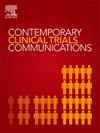Structures and strategies for retaining an international pediatric cohort from birth: Lessons from The Environmental Determinants of Diabetes in the Young (TEDDY) study
IF 1.4
Q4 MEDICINE, RESEARCH & EXPERIMENTAL
引用次数: 0
Abstract
Background
Retention of study participants in observational studies is essential to maintaining the representativeness of the population, minimizing selection bias, and assuring sufficient statistical power. The aim of this report is to describe the structures and strategies used to retain participants in The Environmental Determinants of Diabetes in the Young (TEDDY) Study, an observational study of children at increased genetic risk for type 1 diabetes followed in an intensive protocol from birth until age 15.
Methods
Teague et al.’s systematic review of study retention strategies identified four domains: barrier reduction; community building; follow-up/reminder; and tracing strategies (1). TEDDY retention strategies were categorized into each of these domains. A fifth category presented strategies unique to TEDDY.
Results
TEDDY employed over one hundred retention strategies during the 15 years of follow-up; many could be categorized within the Teague domains. Strategies unique to TEDDY included (1) study structures to support retention; (2) risk communication and education strategies specific to this population; (3) Data-informed retention strategies that addressed protocol challenges in real-time; and (4) implementation of a re-engagement protocol for those who had withdrawn from the study.
Conclusion
Pediatric cohort studies should include strategies, structures, and resources to address retention at the study's initiation and on an ongoing basis. Retention strategies should not remain static but change with the developmental needs of the child. Collecting and analyzing data on an ongoing basis permits retention strategies to be put in place to address protocol and retention challenges in real time.
Trial registration
ClinicalTrials.gov Identifier: NCT00279318.
从出生开始保留国际儿科队列的结构和策略:来自青少年糖尿病的环境决定因素(TEDDY)研究的经验教训
背景:在观察性研究中,保留研究参与者对于保持总体的代表性、最小化选择偏差和确保足够的统计效力至关重要。本报告的目的是描述用于保留青少年糖尿病环境决定因素(TEDDY)研究参与者的结构和策略,这是一项观察性研究,对1型糖尿病遗传风险增加的儿童进行了强化研究,从出生到15岁。steague等人对学习保留策略的系统回顾确定了四个领域:减少障碍;社区建设;后续/提醒;跟踪策略(1)。TEDDY保留策略被分为这两个领域。第五类是泰迪熊独有的策略。结果在15年的随访中,稳定地采用了100多种挽留策略;许多都可以归为蒂格的范畴。TEDDY独有的策略包括(1)支持记忆的学习结构;(2)针对这一人群的风险沟通和教育策略;(3)实时解决协议挑战的数据知情保留策略;(4)对那些退出研究的人实施重新参与协议。结论:儿科队列研究应包括策略、结构和资源,以在研究开始时和持续进行时解决保留问题。保留策略不应一成不变,而应随着儿童的发展需要而改变。在持续的基础上收集和分析数据,允许将保留策略放置到位,以实时解决协议和保留挑战。临床试验注册号:NCT00279318。
本文章由计算机程序翻译,如有差异,请以英文原文为准。
求助全文
约1分钟内获得全文
求助全文
来源期刊

Contemporary Clinical Trials Communications
Pharmacology, Toxicology and Pharmaceutics-Pharmacology
CiteScore
2.70
自引率
6.70%
发文量
146
审稿时长
20 weeks
期刊介绍:
Contemporary Clinical Trials Communications is an international peer reviewed open access journal that publishes articles pertaining to all aspects of clinical trials, including, but not limited to, design, conduct, analysis, regulation and ethics. Manuscripts submitted should appeal to a readership drawn from a wide range of disciplines including medicine, life science, pharmaceutical science, biostatistics, epidemiology, computer science, management science, behavioral science, and bioethics. Contemporary Clinical Trials Communications is unique in that it is outside the confines of disease specifications, and it strives to increase the transparency of medical research and reduce publication bias by publishing scientifically valid original research findings irrespective of their perceived importance, significance or impact. Both randomized and non-randomized trials are within the scope of the Journal. Some common topics include trial design rationale and methods, operational methodologies and challenges, and positive and negative trial results. In addition to original research, the Journal also welcomes other types of communications including, but are not limited to, methodology reviews, perspectives and discussions. Through timely dissemination of advances in clinical trials, the goal of Contemporary Clinical Trials Communications is to serve as a platform to enhance the communication and collaboration within the global clinical trials community that ultimately advances this field of research for the benefit of patients.
 求助内容:
求助内容: 应助结果提醒方式:
应助结果提醒方式:


